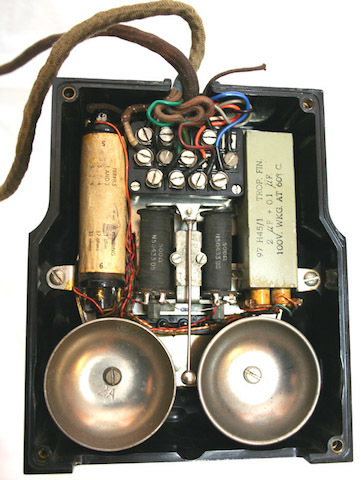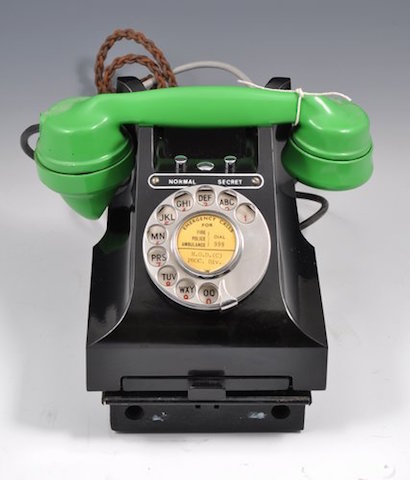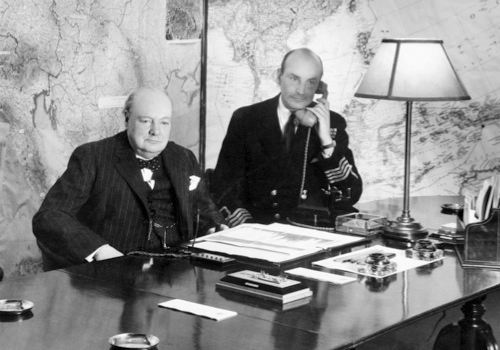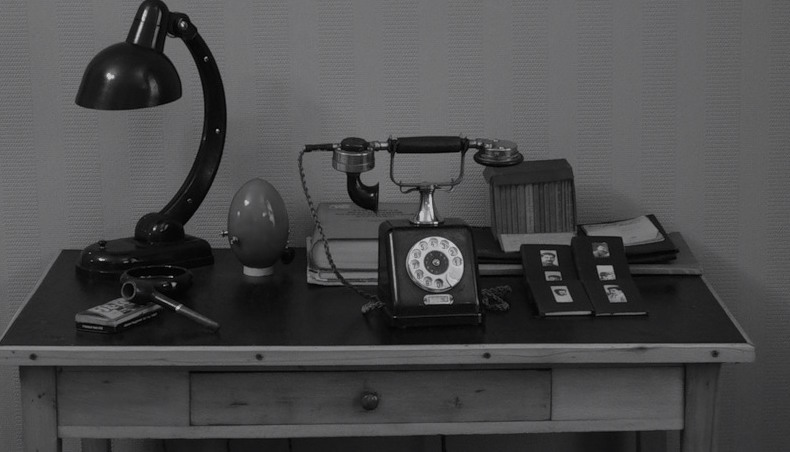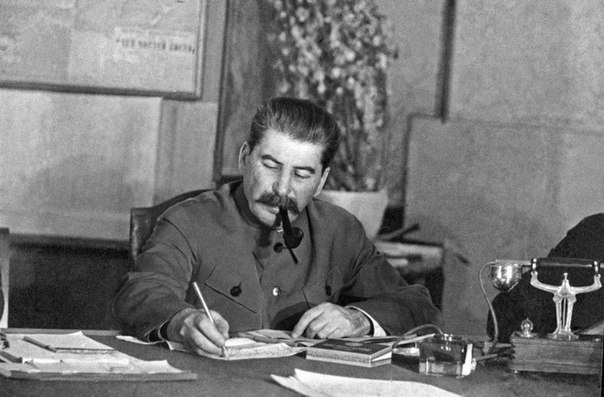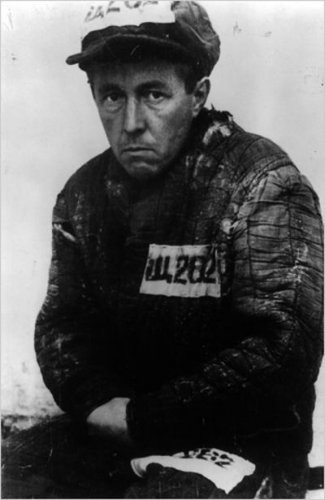Domestic advocates of speech
As the threat of a new world war grew in the 1930s, the leadership of the USSR realized the urgent need to develop research and development work in the field of communications technology. A large-scale project was immediately launched, and the task was completed with “honor,” at the cost of broken human destinies.
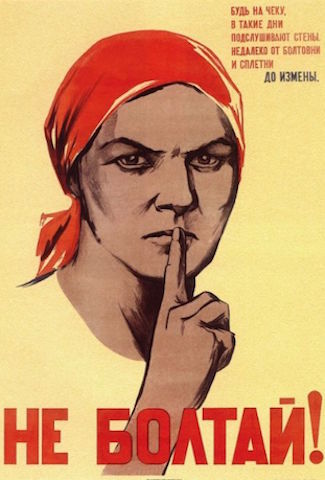
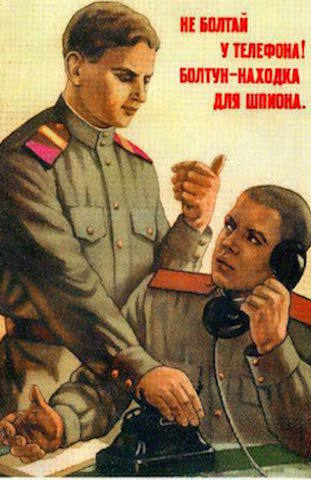

1930-1940 - the first stage. Equipment for securing telephone conversations for shortwave communications has been developed. The team of the future academician Kotelnikov was engaged in this.
1941-1947 - the second stage. The first R&D was carried out, small series of equipment were released, teams of developers who were engaged in the maintenance of the equipment itself and the development of the decryption service were assembled.
In 1948, the Marfinsky laboratory was formed, which served as the beginning of the third stage. The goal of this stage was the development of equipment that would ensure the security of classified negotiations over a standard telephone channel.
It is no secret that before the Second World War, due to the great advantage in technical resources and scientific personnel, the USA belonged to the world leadership in the development of the most complex speech encryptors with guaranteed resistance against possible interception and decryption by the enemy. For government and military communications, an apparatus for securing wireline and over-the-air telephone communications has been developed using digital speech coding methods with various transmission rates in the range of ~ 1600 to 50,000 bit / s. These works in the United States were carried out at a level of secrecy comparable to the atomic bomb project. At that time, terminals for classified voice communications such as KY-1, KY-3, KY-8, KY-9, KO-6, HY-2 and others were created on the electronic-tube and, later, experimental transistor element bases. .
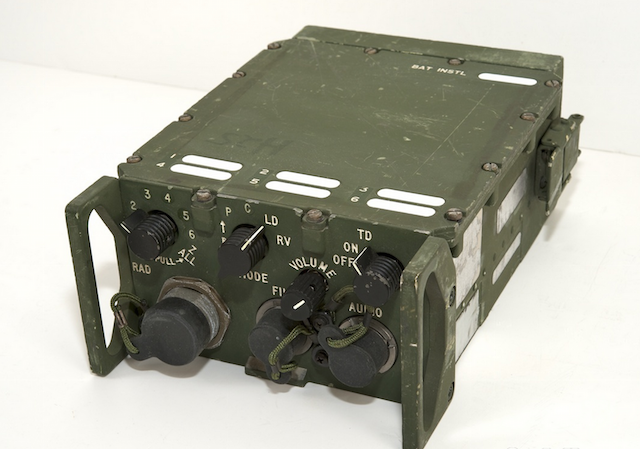
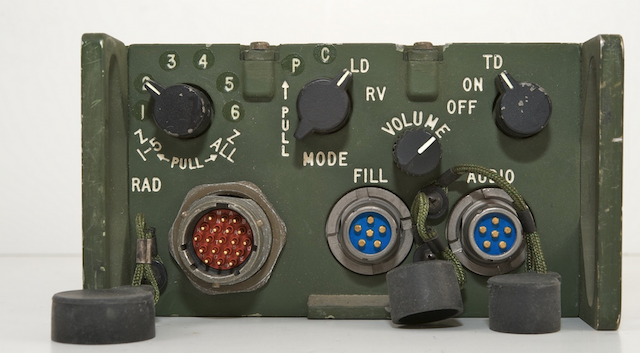
pictured KY- 57
The designers of such equipment in the USSR did not know any technical information about the development of such terminals with guaranteed resistance to classified negotiations. Therefore, the staff of the Martha laboratory had to decide what and how to build without analogues, for the first time in the world and with almost no scientific groundwork. In addition, the building of the former theological seminary allocated for the laboratory, and in the 1930s the children's colony of the Ministry of Internal Affairs, was in extremely poor condition and had to work in very difficult post-war conditions.
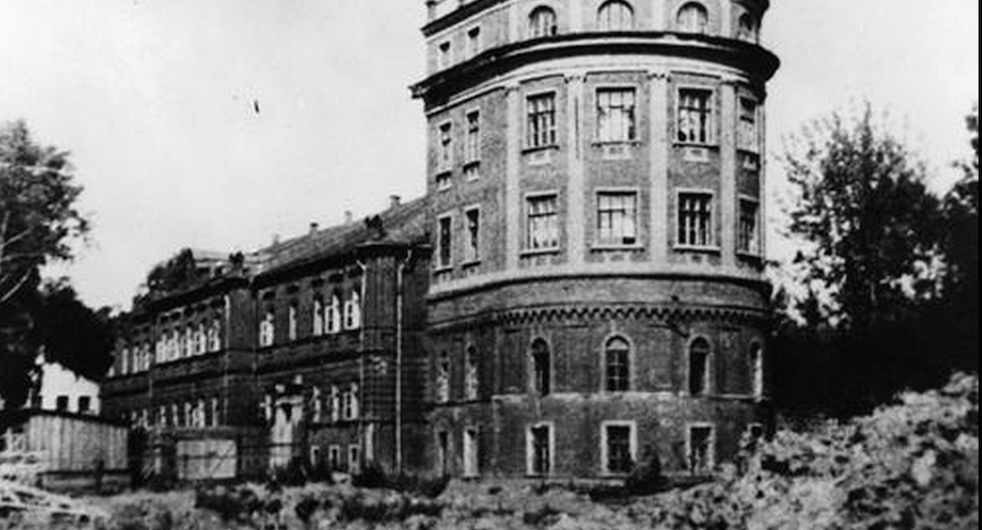
Martha Sharashka / Special Prison No. 1 / No. 16 of the MGB / Research Institute of Communications - a special prison located on the territory of the former Alexander Mariinsky shelter in Marfin. The imprisoned specialists worked on the study of “sound-visuals” according to the assignment of the MGB, which was in the interests of Soviet intelligence. At present - Institute of Automation. After the war, a defense enterprise was born on the basis of Sharashka - Laboratory No. 8, where German prisoners worked, including prisoners.
Here is what civilian and prisoners recalled about the nature of behavior in this institution:
In 1948-1951, the laboratory staff obtained the most significant results in the entire history of the development of secret telephony in the USSR. On the basis of “Laboratory No. 8” in Marfino, in January 1952, the State Research Institute No. 2 was created to carry out the most important research on the development and construction of equipment for classified communications.
In 1952, the USSR’s first digital classified vocoder communications system was created and launched into serial production, operating via standard wired channels. In 1954, it was installed on the longest communication lines at that time, Moscow - Beijing, Moscow - Berlin. With the existing electron-tube element base, this technique was extremely cumbersome: 3 racks of the main components 2.5 m high and power racks. So, only the encoder rack contained 213 electronic tubes, electromagnetic relays - 145, magnetic memory elements - 700.
The Marfinsky laboratory solved the most difficult scientific and technical problem of creating the M-803 equipment, which was used to securely classify telephone conversations on HF communication lines, the prototypes of which were adopted by the high government commission on July 29, 1950. By decree of the Council of Ministers of the USSR, the Martha laboratory was to mass-produce in 1951 22, and in 1952 32 half-sets of analog equipment M-803 and the required number of repeaters.
The semi-kit M-803 consisted of 4 racks of standard two-meter dimensions. It was planned to produce more than 100 racks, which was feasible only to a fairly large plant. In addition to the M-803-5 equipment variant suitable for use on foreign high-frequency (HF) communication lines, the M-503 temporary resistance equipment was designed, which was recognized as suitable for operation on internal communication lines.
The Sh-47 encoder was created. It was not the first disk, but a machine built on relay-contact circuits.
Briefly about some of the remarkable specialists who created in the USSR apparatus for securing radio and telephone conversations in the post-war period.
KALACHEV Konstantin Fedorovich - chief specialist of the institute and deputy director for scientific work, made a great contribution to the development of cipher communication equipment and the creation of the foundations of this area in science and technology.
VOLOSHENKO Julius Yanovich. In 1951-1954, the development of telephone vocoder equipment of guaranteed durability M-803-5 was completed. Important foreign highways Moscow - Berlin and Moscow - Beijing were equipped with M-803-5 equipment. More than 50 years of his life, he gave encryption in telephony and the secret of other types of information.
VASILIEV Anton Mikhailovich - supervised the work on creating the M-803 device compressing clipped speech with a transmission speed of ~ 6000 bit / s.
With the release of the Decree of the USSR Council of Ministers of January 12, 1952 "On the development of equipment for classifying telephone conversations," the era of the Martha laboratory ended. An institute was created with a staff of 700 people, called State Research Institute No. 2 (Scientific Research Institute of Automatics). According to the memoirs, the decision to create NII-2 was made personally by I.V. Stalin.
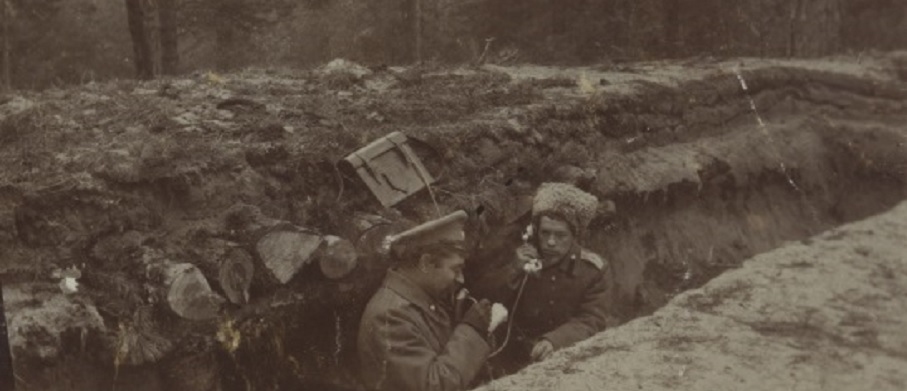
The development of portable classified equipment SI-15 (Tit) also belongs to the first period of the war. Its analogue, the Bullfinch (SAU-16), made in the form of a suitcase, was used mainly when departing the front commanders and representatives of the Supreme High Command Headquarters to points that did not have high-frequency stations.
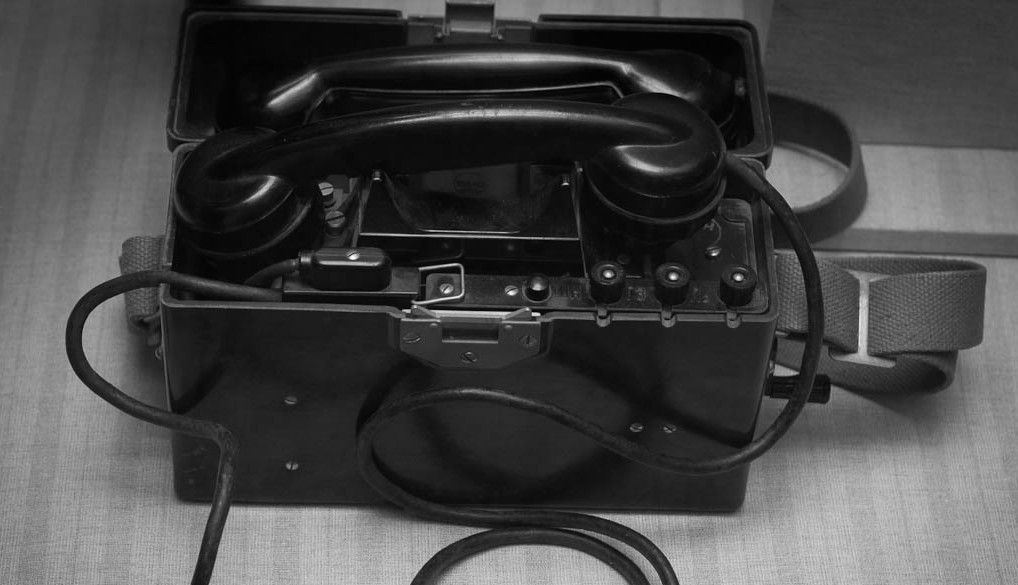
The Sobol-P HF radiotelephone negotiation encryption devices received a baptism of fire at the end of 1942 on the Moscow-Tbilisi communication line, replacing the wired connection with the headquarters of the Transcaucasian Front broken by the Germans. This radio communication was discontinued only after the construction of a new 1315 km long wireline running along the deserted coast of the Caspian Sea. Then, Sobol-P equipment was used to equip experienced Moscow trunk telephone communications with Khabarovsk and the headquarters of 2 Ukrainian, 1 Belorussian, and 2 Baltic fronts. Through communication channels equipped with Sobol-P equipment, the transmission of top secret reports and orders was allowed.
For telephone communication between the Headquarters of the Supreme High Command and the fronts, S-1 encoders were used on short-wave channels, and Sova and Neva were used on wired channels. These classified devices of complex coding schemes were designed for use on all high-frequency government communications channels. For the rear channels of the stationary network of government RF communications, secret equipment of a complex Volga-S scheme was used. Neva equipment worked on wire lines of communication between Moscow and the 1 Belorussian and 2 Belorussian fronts.
This classification technique was used during the Tehran, Yalta and Potsdam conferences of the heads of the three countries. And also for communication with Moscow of our delegation during the adoption of the surrender of Germany in May 1945. The Sobol II and Neva devices have been used for a long time on Moscow’s communications with Helsinki, Paris and Vienna during the negotiations on the conclusion of peace treaties after the end of World War II
About fifty copies were produced by Sobol-II encoders, and in just 3 years of the war and later, a total of 2024 security devices, mainly of the spectrum inverter type, were used on communication lines. The most prominent military leaders of the period of World War II G.K. Zhukov, I.S. Konev, I.T. Peresypkin, A.E. Eremenko, V.I. Chuikov in a number of publications speaks of the good work of government communications. The intelligence service did not record the facts of decryption of negotiations classified by sophisticated encrypting domestic equipment. So, in the post-war years, Paris-Moscow communications were blocked by transmissions with Sobol-II equipment, but were not intercepted for decryption.
In the period 1930-1945, large German companies AEG, Telefunken and Siemens developed up to 15 types of telephone encryptors and produced 2180 copies, but all of them had limited resistance to decryption. For the creation of the most complex domestic equipment for classifying speech, a group of developers (D.P. Gorelov, N.N. Naydenov, I.S. Neiman, A.M. Trakhtman) and V.A. Kotelnikov in 1943 and 1946 was awarded the Stalin Prizes of the first degree.
In the mid-1950s, industrial research organizations were created - OKB at the VEM plant in Penza and OKB at the KEMZ plant in Kaluga, which were involved in the development and provision of industrial production of cryptographic protection equipment for telephone conversations and telegraph information.
In 1968, together with NII-2, the plant was to produce the first 4 sets of a complex technical complex for closing all types of information on trunk communication lines, in two versions - mobile and stationary. Initially, the production of modular units was mastered, and since 1969, the products as a whole.
A number of equipment models of both temporary and guaranteed durability were created and introduced for the field network of government communications. In the 1960s, the countries of the socialist camp organized their networks of government communications. To do this, they were given stations and RF communications equipment, as well as classified equipment, ciphers for which were manufactured in the USSR and sent to their destinations by diplomatic mail
Despite the post-war devastation, new results were obtained in 1950-1960, which contributed to progress in the development of methods for digital representation and coding of speech signals with ever lower transmission rates while maintaining legibility and naturalness at the level required by the practice of communication. The latter is especially relevant for speech classification equipment, which inevitably introduces distortions into the signal during its encryption transformations and subsequent transmission via communication channels.
One of the new results that foreign scientists came to much later was the construction of low-speed vocoders, which are essential for government, military, and commercial communications.
An interesting fact: the vocoder was also created by American engineers to compress the frequency band of the transmitted speech signal. This device determined the basic parameters of the signal, encoded them, and transmitted the modulated radio signal to the air in a narrower frequency band than a regular telephone signal.
On the receiving side of the radio line, the parameters of the received signal were decoded and synthesized based on them with a special generator of the initial voice message, but since the sound of the synthesized speech on the receiving side only remotely resembled the voice of the speaker on the transmitting side of the radio line, vocoder telephony was not widespread by the beginning of the 40s.
In Penza, in 1958, an understudy was formed for PO Box 37 - NII-3, which since 1964 was appointed the lead enterprise for the development of equipment for encrypting telegraph information and data.
First-generation encryption devices that protect information transmitted over telephone and short-wave communication channels: M-803-5, Liana, Almaz, Lily of the valley, Siren, KU-LS, Sever-M, Lotos-V, Bulava, were created in 1950 1960 years. Later, special complexes of technical means of securing communications and control were developed: the Caucasus, Dew and Interior.
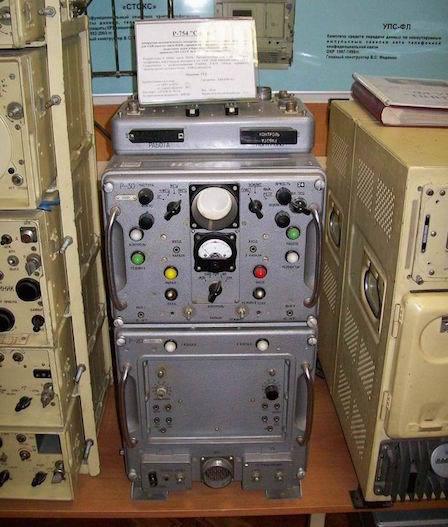
Siren
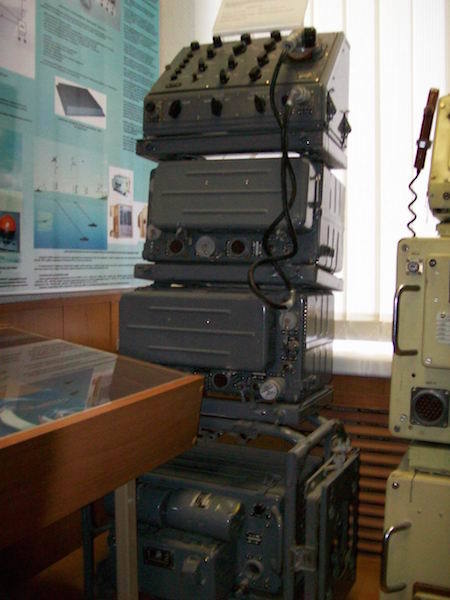
Acacia
Alas ... many images of the equipment "can not be found in the afternoon with fire," since previously photographing equipment was strictly FORBIDDEN.



1930-1940 - the first stage. Equipment for securing telephone conversations for shortwave communications has been developed. The team of the future academician Kotelnikov was engaged in this.
1941-1947 - the second stage. The first R&D was carried out, small series of equipment were released, teams of developers who were engaged in the maintenance of the equipment itself and the development of the decryption service were assembled.
In 1948, the Marfinsky laboratory was formed, which served as the beginning of the third stage. The goal of this stage was the development of equipment that would ensure the security of classified negotiations over a standard telephone channel.
It is no secret that before the Second World War, due to the great advantage in technical resources and scientific personnel, the USA belonged to the world leadership in the development of the most complex speech encryptors with guaranteed resistance against possible interception and decryption by the enemy. For government and military communications, an apparatus for securing wireline and over-the-air telephone communications has been developed using digital speech coding methods with various transmission rates in the range of ~ 1600 to 50,000 bit / s. These works in the United States were carried out at a level of secrecy comparable to the atomic bomb project. At that time, terminals for classified voice communications such as KY-1, KY-3, KY-8, KY-9, KO-6, HY-2 and others were created on the electronic-tube and, later, experimental transistor element bases. .


pictured KY- 57
Immediately after the end of the First World War, American engineers began to work on the creation of means and methods for classifying telephone conversations. Scrambler - this is the name they received the first example of hidden telephone equipment created by them. It was used in a confidential telephone call between Los Angeles and Catalina Island, 20 km away. The closure of the communication channel was achieved in a scrambler due to the frequency inversion of the spectrum of the speech signal, during which the low-frequency components of the spectrum were converted to high-frequency ones and vice versa.
As a result of such a conversion, the telephone message became illegible if it was received by an outsider using a conventional radio. At the same time, on the receiving side of the radio line equipped with a scrambler, a known reverse conversion of the spectrum of the received speech signal was carried out, with the help of which the initial message was restored.
In the 1920s, a new scrambler was developed in the United States based on the use of a more advanced method of closing telephone messages. In accordance with it, the spectrum of the speech signal as a result of filtering was divided into 5 frequency bands of equal width, after which they were frequency inverted and rearranged according to some rule, which changed every 20 seconds.
The designers of such equipment in the USSR did not know any technical information about the development of such terminals with guaranteed resistance to classified negotiations. Therefore, the staff of the Martha laboratory had to decide what and how to build without analogues, for the first time in the world and with almost no scientific groundwork. In addition, the building of the former theological seminary allocated for the laboratory, and in the 1930s the children's colony of the Ministry of Internal Affairs, was in extremely poor condition and had to work in very difficult post-war conditions.
Martha Sharashka

Martha Sharashka / Special Prison No. 1 / No. 16 of the MGB / Research Institute of Communications - a special prison located on the territory of the former Alexander Mariinsky shelter in Marfin. The imprisoned specialists worked on the study of “sound-visuals” according to the assignment of the MGB, which was in the interests of Soviet intelligence. At present - Institute of Automation. After the war, a defense enterprise was born on the basis of Sharashka - Laboratory No. 8, where German prisoners worked, including prisoners.
... Someone suggested to the father of eastern and western peoples the idea of creating a special secret telephony - such that no one could ever understand, even intercepting his telephone conversation. By that time, several types of secret telephones already existed, but not one could satisfy the exacting taste of Stalin.
HF communications only prevented direct eavesdropping. A high-frequency current was transmitted through the wires, modulated by sound signals from the telephone membrane. The eavesdropper perceived only a continuous squeak. But it was enough to pick up a filter for “filtering out” the high frequency, and the conversation became clearly audible.
During the Second World War, more complex systems appeared - the so-called mosaic encryption. Sound signals were divided by frequency filters into three or four bands and, with the help of a magnetic sound recording disk, were split in time into short fractions - one and a half hundred milliseconds. And the encoder mixed these time-frequency segments. On the telephone line was a sort of crumble of squealing and squeaking. At the receiving end, the transmission was decrypted and the original speech restored.
But the enemy could do the same! It was quite simple to do this, having acquired a simple analyzer of frequencies of a speech signal - a spectrometer. By applying words fragmented by a mosaic encoder to its input, one could easily learn to distinguish bands of filters used in the encoder and time fractions into which the encrypted signals were divided by the spectrogram from the spectrogram. And at the same time - read the spectrograms of the encrypted speech signal by syllables and according to words, slowly but surely.
Probably, the information about the unreliability of mosaic encoders reached the level of the highest leadership, therefore, in 1947, Stalin set the task for Soviet developers of encryption equipment to invent a telephone so that communication could be maintained for thousands of kilometers that was completely inaccessible to any kind of eavesdropping.
A special institute was organized, the work of which Stalin personally observed. The Institute went down in history as NII-2, and in literature as the “Martha Sharashka”. The laboratory of the future research institute and the prison, which in the KGB was in charge of it, were given the name "Object Number 8" or "Special Prison Number 16" in the old building of the seminary near Moscow. As in many then powerful scientific endeavors, prisoners were used as labor.
They began to engage in radio reconnaissance in the "Martha Sharashka" from its very beginning, though very peculiarly, in the spirit of that prison institution, which was located under the same roof with research laboratories. During the revolutionary holidays, some prisoners were supposed to be isolated from others. The selection criteria were purely formal: those convicted of especially dangerous crimes ("terrorists"), for escaping from places of detention and repeatedly convicted ("recidivists") were seized. For their isolation, various reasons were invented that were not related to the above selection criteria. For example, somehow, on the eve of May 1, it suddenly became necessary to carry out an urgent, especially secret task - to decrypt a telegram intercepted in West Berlin. Selected to the decryption group created for this purpose according to the degree of their social danger, and by no means in accordance with cryptanalytic capabilities, “terrorists” and “repeat offenders,” of course, did not decrypt anything. The next time, they were already, without any formal reason, simply taken away for the holidays to the Butyrki prison.
Another sign of prison life was the use of the account "envelope", which came to the "Martha Sharashka" from the camp accounting system with the prisoners. Dots indicate numbers from one to four, and connecting points indicate lines from five to ten.
In the "Martha Sharashka" a mathematical group functioned, which was engaged not only in the development of ciphers, but also in cryptanalysis - the comparative durability of various secret telephone communication systems was determined there. Estimates of the resistance of the investigated secret phones were expressed as fractions. The constant numerator was one minute of encrypted conversation. And in the denominator a two-three-digit number was put down - the minutes spent on decrypting or restoring the encryption scheme and the key to it. The larger the denominator, the more resistant the encoder. The marks of various secret phones ranged from 1/200 to 1/600.
However, the decryption speed, which was carried out manually, instead of determining the objective characteristics of a secret communication, noticeably changed depending on subjective reasons. For example, in the mornings, decryption was faster than by the end of the day, and slowed down from any discomfort of the performer. Especially adversely affected the decryption rate of intestinal disorders. It was easy to imagine that the enemy had at their disposal many young, healthy, well-trained cryptanalysts, for whom the differences between morning and evening, more complex and less complex types of mosaic encoders were insignificant. With the use of spectrographs for decryption purposes, mosaic ciphers generally became clearly unstable.
Nevertheless, these comparisons were no less important than objective resistance factors. After all, the same compared systems were investigated several times by different cryptanalysts. And the results were obtained every time if not identical, then in any case close. Although the values of fractional indicators fluctuated, the results of comparisons, as a rule, coincided. Among other things, in the 1950s, phones with mosaic coders were still needed in the army and in the state security organs. They prevented direct eavesdropping, since they could only be opened in laboratory conditions with special equipment, and they were much cheaper than samples of the latest, “absolutely” resistant encryption equipment.
In the early 1950s, the “Martha Sharashka” passed from KGB supervision to the Central Committee of the CPSU, where a special secret communications department was created. But only in the mid-60s, by order from above, in the "Martha Sharashka" refused to use the slave labor of prisoners. The “Martha Sharashka” became the embryo of the powerful scientific and production association (NPO) “Automatics”, which by the beginning of the 90s included several institutes and more than a dozen factories. Taking into account the allies, the production of cipher equipment within the framework of NPO Avtomatika provided the means of subsistence for several hundred thousand people.
... Everything was invented very simply. Professors, engineers of the highest ranks, inventors - spoiled people. They put a lot of money, personal bets, academic rations. In such circumstances, sometimes you want to take a walk, in a restaurant with girls or in the country with your legal spouse. And go on vacation no earlier than August, no later than September, but to the South Bank or Sochi-Matsesta. In the wild, the head is rarely busy with one job. There all sorts of extraneous thoughts climb, and cares, and dreams. About women, about a career, about an apartment, about a summer house, about a squabble with a colleague, about children, relatives, friends, acquaintances ...
Solzhenitsyn in a camp robe
This means that an engineer cannot work at full strength and through force. The hard worker, with the help of the party committee-factory committee, is still pulling him on the Stakhanovite — others think for him; his business is only to rest against the horns and not prevent other scam from scattering. He will give as much as they say, at least a hundred, at least two hundred, at least a thousand percent. For this, neither mind nor conscience is needed. But with those who move their brains, who have a living soul, and maybe even have a kind of conscience, it’s more complicated. Moreover, if he understands a lot about himself, thinks that he is smarter than his superiors.
Only native organs can help this. They take him by the scruff of his neck, drag him to Lubyanka, to Lefortovo or to Sukhanovka — admit, fucking, who he was spying on, how he was sabotaging, where he sabotaged ... They let him down one or two in a cane with frost, with water. They put it in the face, on the ass, on the ribs - but so as not to kill, not to cripple, but so that he would get pain and shame so that he feels that he is no longer a man, but no one, and they can do everything with him want to. The prosecutor will explain the articles to him, promise a tower. The investigator threatens, if he doesn’t admit, to put his wife in prison ...
And then, after all this, give him a generous ten. To the faint of heart, both fifteen and twenty years will seem like a gift, an unexpected joy. And then they will console him: try, you can earn early release and even rewards. Take an example from people like Ramzin, prove that you sincerely repented, that your knowledge and skills are useful to the Motherland - and all the same will return to you, and even more will get ...
That's how they prepare shots for sharakh. There, our brother works for real, with full dedication.
Here is what civilian and prisoners recalled about the nature of behavior in this institution:
Among our special contingent, the majority are enemies of the people. Of course, there are those who more or less sincerely repent of the crimes committed. But competent authorities will judge this, and we must all observe them, so that, if asked, we will provide the necessary information. There are also malicious, unarmed crashes, those who almost never hide their hatred of the Soviet regime. Behind them you need an eye and an eye. While they are working diligently, they are beneficial, they will be created conditions, they will be financially encouraged, and those who are younger, who are not petrified, maybe even re-educate ... The most dangerous, most insidious enemies are double-armed, unarmed and not repenting. Such as Kopelev. These are still masked, still hide their true guts, pretend to be Soviet patriots, even ideological communists ... It takes double triple alertness. You can not believe any of their words. Decisively avoid any conversations not related to work. Of course, you need to learn everything that they can, use their knowledge. And therefore, one should not create conflict relations, be rude, speak harshly ... But they should immediately report about each attempt at rapprochement, and they themselves should politely but categorically evade themselves ... ”
Two of the three assistants did just that: they either didn’t “hear” extraneous questions (“Where did you study? What are you reading? Are you married?”) Or answered: “During working hours you shouldn’t talk, please don’t ask, don’t talk otherwise I will be in trouble for you too. ”
The third turned out to be bolder, more temperamental, and more curious than the rest. She was dissatisfied with her husband - a colonel of the MGB: for months on the road, she only drinks at home until she is nascent, and walks on the side.
The “thoroughly tested cadres” of freeloaders are not very qualified relatives of MGB officers. They are sent to the laboratory to work and study, in order to later replace the special contingent.
In 1948-1951, the laboratory staff obtained the most significant results in the entire history of the development of secret telephony in the USSR. On the basis of “Laboratory No. 8” in Marfino, in January 1952, the State Research Institute No. 2 was created to carry out the most important research on the development and construction of equipment for classified communications.
In 1952, the USSR’s first digital classified vocoder communications system was created and launched into serial production, operating via standard wired channels. In 1954, it was installed on the longest communication lines at that time, Moscow - Beijing, Moscow - Berlin. With the existing electron-tube element base, this technique was extremely cumbersome: 3 racks of the main components 2.5 m high and power racks. So, only the encoder rack contained 213 electronic tubes, electromagnetic relays - 145, magnetic memory elements - 700.
The Marfinsky laboratory solved the most difficult scientific and technical problem of creating the M-803 equipment, which was used to securely classify telephone conversations on HF communication lines, the prototypes of which were adopted by the high government commission on July 29, 1950. By decree of the Council of Ministers of the USSR, the Martha laboratory was to mass-produce in 1951 22, and in 1952 32 half-sets of analog equipment M-803 and the required number of repeaters.
The semi-kit M-803 consisted of 4 racks of standard two-meter dimensions. It was planned to produce more than 100 racks, which was feasible only to a fairly large plant. In addition to the M-803-5 equipment variant suitable for use on foreign high-frequency (HF) communication lines, the M-503 temporary resistance equipment was designed, which was recognized as suitable for operation on internal communication lines.
The Sh-47 encoder was created. It was not the first disk, but a machine built on relay-contact circuits.
Briefly about some of the remarkable specialists who created in the USSR apparatus for securing radio and telephone conversations in the post-war period.
KALACHEV Konstantin Fedorovich - chief specialist of the institute and deputy director for scientific work, made a great contribution to the development of cipher communication equipment and the creation of the foundations of this area in science and technology.
VOLOSHENKO Julius Yanovich. In 1951-1954, the development of telephone vocoder equipment of guaranteed durability M-803-5 was completed. Important foreign highways Moscow - Berlin and Moscow - Beijing were equipped with M-803-5 equipment. More than 50 years of his life, he gave encryption in telephony and the secret of other types of information.
VASILIEV Anton Mikhailovich - supervised the work on creating the M-803 device compressing clipped speech with a transmission speed of ~ 6000 bit / s.
With the release of the Decree of the USSR Council of Ministers of January 12, 1952 "On the development of equipment for classifying telephone conversations," the era of the Martha laboratory ended. An institute was created with a staff of 700 people, called State Research Institute No. 2 (Scientific Research Institute of Automatics). According to the memoirs, the decision to create NII-2 was made personally by I.V. Stalin.

The development of portable classified equipment SI-15 (Tit) also belongs to the first period of the war. Its analogue, the Bullfinch (SAU-16), made in the form of a suitcase, was used mainly when departing the front commanders and representatives of the Supreme High Command Headquarters to points that did not have high-frequency stations.

Sable and Owl, Volga and Neva
The Sobol-P HF radiotelephone negotiation encryption devices received a baptism of fire at the end of 1942 on the Moscow-Tbilisi communication line, replacing the wired connection with the headquarters of the Transcaucasian Front broken by the Germans. This radio communication was discontinued only after the construction of a new 1315 km long wireline running along the deserted coast of the Caspian Sea. Then, Sobol-P equipment was used to equip experienced Moscow trunk telephone communications with Khabarovsk and the headquarters of 2 Ukrainian, 1 Belorussian, and 2 Baltic fronts. Through communication channels equipped with Sobol-P equipment, the transmission of top secret reports and orders was allowed.
For telephone communication between the Headquarters of the Supreme High Command and the fronts, S-1 encoders were used on short-wave channels, and Sova and Neva were used on wired channels. These classified devices of complex coding schemes were designed for use on all high-frequency government communications channels. For the rear channels of the stationary network of government RF communications, secret equipment of a complex Volga-S scheme was used. Neva equipment worked on wire lines of communication between Moscow and the 1 Belorussian and 2 Belorussian fronts.
This classification technique was used during the Tehran, Yalta and Potsdam conferences of the heads of the three countries. And also for communication with Moscow of our delegation during the adoption of the surrender of Germany in May 1945. The Sobol II and Neva devices have been used for a long time on Moscow’s communications with Helsinki, Paris and Vienna during the negotiations on the conclusion of peace treaties after the end of World War II
About fifty copies were produced by Sobol-II encoders, and in just 3 years of the war and later, a total of 2024 security devices, mainly of the spectrum inverter type, were used on communication lines. The most prominent military leaders of the period of World War II G.K. Zhukov, I.S. Konev, I.T. Peresypkin, A.E. Eremenko, V.I. Chuikov in a number of publications speaks of the good work of government communications. The intelligence service did not record the facts of decryption of negotiations classified by sophisticated encrypting domestic equipment. So, in the post-war years, Paris-Moscow communications were blocked by transmissions with Sobol-II equipment, but were not intercepted for decryption.
In the period 1930-1945, large German companies AEG, Telefunken and Siemens developed up to 15 types of telephone encryptors and produced 2180 copies, but all of them had limited resistance to decryption. For the creation of the most complex domestic equipment for classifying speech, a group of developers (D.P. Gorelov, N.N. Naydenov, I.S. Neiman, A.M. Trakhtman) and V.A. Kotelnikov in 1943 and 1946 was awarded the Stalin Prizes of the first degree.
In the mid-1950s, industrial research organizations were created - OKB at the VEM plant in Penza and OKB at the KEMZ plant in Kaluga, which were involved in the development and provision of industrial production of cryptographic protection equipment for telephone conversations and telegraph information.
In 1968, together with NII-2, the plant was to produce the first 4 sets of a complex technical complex for closing all types of information on trunk communication lines, in two versions - mobile and stationary. Initially, the production of modular units was mastered, and since 1969, the products as a whole.
A number of equipment models of both temporary and guaranteed durability were created and introduced for the field network of government communications. In the 1960s, the countries of the socialist camp organized their networks of government communications. To do this, they were given stations and RF communications equipment, as well as classified equipment, ciphers for which were manufactured in the USSR and sent to their destinations by diplomatic mail
Despite the post-war devastation, new results were obtained in 1950-1960, which contributed to progress in the development of methods for digital representation and coding of speech signals with ever lower transmission rates while maintaining legibility and naturalness at the level required by the practice of communication. The latter is especially relevant for speech classification equipment, which inevitably introduces distortions into the signal during its encryption transformations and subsequent transmission via communication channels.
One of the new results that foreign scientists came to much later was the construction of low-speed vocoders, which are essential for government, military, and commercial communications.
An interesting fact: the vocoder was also created by American engineers to compress the frequency band of the transmitted speech signal. This device determined the basic parameters of the signal, encoded them, and transmitted the modulated radio signal to the air in a narrower frequency band than a regular telephone signal.
On the receiving side of the radio line, the parameters of the received signal were decoded and synthesized based on them with a special generator of the initial voice message, but since the sound of the synthesized speech on the receiving side only remotely resembled the voice of the speaker on the transmitting side of the radio line, vocoder telephony was not widespread by the beginning of the 40s.
Back in 1962, N.I. Dukelsky published a fundamental work, fantastic in experimental labor costs, which unequivocally proved that speech signals can be tried as a first approximation by representing a sequence of discrete sound standards - phonemes, the number of which (for example, for the Russian language ~ 41–42, English ~ 45, German ~ 43, French ~ 35) slightly exceeds the number of letters of the alphabet of these languages. However, plain text messages are generated as a discrete sequence of isolated letters. The speech signal is, to a large extent, a parallel realization of sound phonemes, in which the phenomenon of acoustic co-articulation occurs - mutual influence or “interpenetration” of adjacent sounds.
In this process, new, transitional and non-stationary (unlike phonemes) sound segments are born, the set of which far exceeds the number of phonemes.
It followed that the presentation of speech in the form of a discrete sequence of phonemes should be preceded by the process of segmentation of the speech stream into acoustic segments, the number of which is at least an order of magnitude greater than the number of phonemes. Those. the automatic recognition of several dozen phonemes should be preceded by the recognition of> 500 speech elements or sound. That is, each phoneme consists of several sound segments. Taking into account the individual variability of the spectral-temporal characteristics of human voices, the creation of methods for automatic recognition and presentation of speech by an invariant sequence of discrete characters (in fact, solving the problem of converting speech to text) required basic research on the “mechanisms” of acoustic generation of speech signals and their auditory perception,
In Penza, in 1958, an understudy was formed for PO Box 37 - NII-3, which since 1964 was appointed the lead enterprise for the development of equipment for encrypting telegraph information and data.
First-generation encryption devices that protect information transmitted over telephone and short-wave communication channels: M-803-5, Liana, Almaz, Lily of the valley, Siren, KU-LS, Sever-M, Lotos-V, Bulava, were created in 1950 1960 years. Later, special complexes of technical means of securing communications and control were developed: the Caucasus, Dew and Interior.

Siren

Acacia
Alas ... many images of the equipment "can not be found in the afternoon with fire," since previously photographing equipment was strictly FORBIDDEN.

